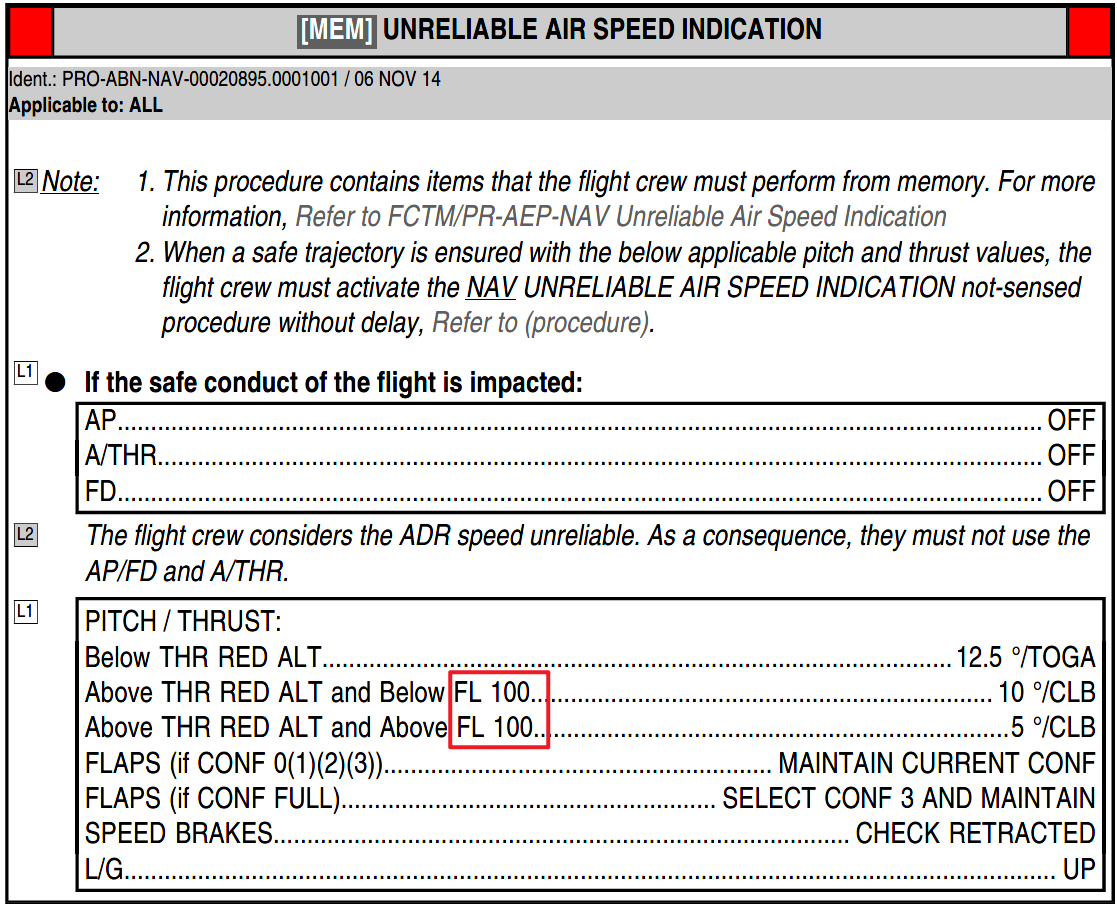在不可靠空速的记忆动作中,“FL 100”的描述存在一些疑问:
- 是气压高度还是场高?举个例子,如果从高高原机场起飞,比如拉萨,在减推高度之后就已经 10000ft 以上了,是否应该跳过“10°/CLB”,直接执行“5°/CLB”。
- 是否区分气压基准 QNH 和 STD?
空客在回复中确认了:
- 是气压高度,如果减推之后已经超过 10000ft,就直接执行“5°/CLB”
- 由于世界各地过渡高度有差别,所以这里的“FL 100”不区分气压基准,通过 10000 ft / FL100 就要调整俯仰/推力。
原文
Q
I'd like to confirm two questions.
Firstly, FL100 refers to pressure altitude rather than true altitude, right? That is to say, if taking off from a high-altitude airport, such as Lhasa, after the THR RED ALT is already above 10000 feet, the "10°/CLB" should be skipped and "5°/CLB" should be directly executed.
Secondly, FL100 doesn't distinguish between the QNH and STD, right?
A
In this particular case (thrust reduction above FL 100), the flight crew should maintain a pitch of 15° with TOGA thrust as long as the aircraft is below the Thrust Reduction Altitude. Then, once the aircraft passes the thrust reduction altitude, the flight crew should adjust the pitch to 5° and set CLB thrust, as already above FL 100.
Indeed, your understanding is correct, the transition to the use of FLs can vary in different parts of the world, and the flight crew will adjust the pitch & thrust when passing 10000 ft / FL100 depending on the area of operations.

